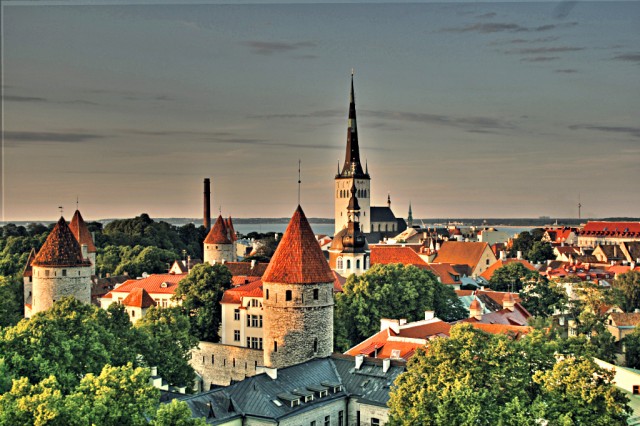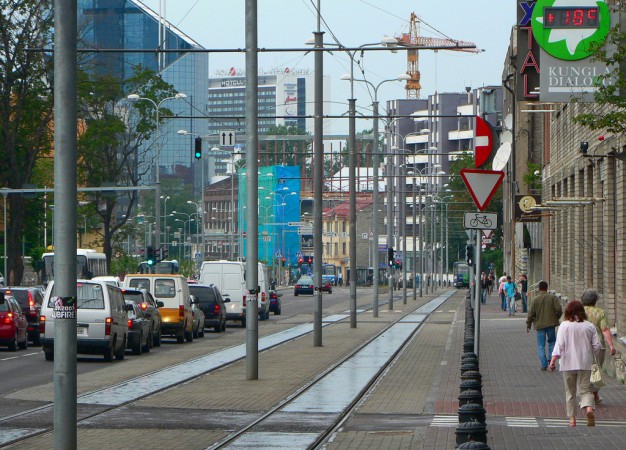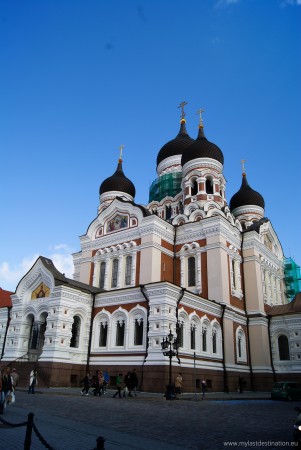 the Travel Enthusiast
the Travel Enthusiast
- 06 Apr
Adam in Amazing Places | NO COMMENTSTallinn, The Hanseatic Prince
The Capital of Estonia is a flourishing commercial center of the Baltic The Toompea hill, where the cathedral lies, was a landmark for navigators over the centuries. When the weather is good it can be seen even from Helsinki, the other side of the Gulf of Finland.
About 20 ferryboats cross daily from Tallinn to Helsinki and vice-versa, bringing many Finns to the city that can benefit from the lower prices and can take a walk in the beautiful medieval town.
The outstanding buildings, the exceptional restaurants are situated one after the other. The city has a 700 year old architectural history. The square in front of the town hall dates back to the 13th century and the city’s pharmacy in the city center was established in 1422.
The pharmacy lies in the heart of the city. Many friendly and smiling people are filling the tables, they fill the entire square. The Square itself has numerous cafes and restaurants, without being bothered by the 15th century Gothic structures which surround them.
An atmosphere filled with life can be seen also at the narrow streets of the city center. (at the narrow -> on the narrow) These streets extends even to the Toompea hill, and they are filled with shops, night clubs, bars and restaurants. (extends -> extend)
The city’s history starts from the 1050s
At the steep Toompea were discovered signs of a settlement from the 1st century BC. The first fortifications of stones were constructed in 1050 to protect the commercial settlement Lindanise. Its reputation spread so fast that the Arabian cartographer Al-Indrisi included it into its own world map in 1154.
In 1219, King Valdemar II of Denmark conquered the settlement and changed its name into “Reval” and built St Mary’s Cathedral between 1229 and 1233 on the top of Toompea Hill. The church is the oldest in mainland Estonia. The king, however, did not succeed in changing the Estonian’s traditions that were established here, along with the Finnish traditions.
- Flights
- Hotels
- Packages
- Cars
- Cruises
travel search by Travelgrove (get this widget)“Reval” had a key position in the western commerce with the east and developed continuously in the shadows of its fortifications. Estonians did not yet benefit from this system, being vassals of other powerful nations until the end of the 20th century.
Tallinn had become for a long time, from 1285, member of the Hanseatic League, and in 1346 was bought by the Order of the Teutonic Knights. Two centuries later it got under Swedish rule and and they shown interest in the Estonian commerce with the east in the 15th century.
Russians were the next after the Swedish in 1710, when Peter the Great occupied the settlement. From that year to 1918, Tallinn was part of Russia.
The Russian Domination
In 1881, Tsar Alexander III gained the throne and started the russification of Estonia, forbidding everything that was Estonian or Non Russian. As a sign of their dominance above the aristocratic Germans who administered Estonia, particularly Livonia and Curlanda, the Russians erected an orthodox cathedral on the Toompea hill called Alexandr Nevski.
Germans occupied Estonia in World War I, but after the defeat of the Germans the Russian Revolution arrived, affecting the country. The Estonian independence took only 22 years: in 1940 it was occupied by the Soviets, after that by the Germans who later retreated from the Red Army in 1940, leaving tremendous destruction.
The victorious Russians included Estonia to the U.R.S.S and started a new period of russification. Only after the collapse of the Soviet Union did it regain its independence, with the same capital,Tallinn.
The City Above and the City Under
Nowadays, the parliament has a residence in the castle from the Toompea Hill, a renovated structure which suffered during World War II. The embassies occupy much of the upper city’s buildings. As mentioned earlier, the oldest church of Estonia, is the Lutheran Cathedral dedicated to St Virgin Mary, it shines above along the less popular Alexander Nevski church.
The lower city is a worthwile destination. Nearby the square, the enormous St Nicholas’s church with its white wall is an example of that kind of architecture. Today, the former church is a museum of art and traditional Estonian craftsmanship that exhibits impressive medieval collections and objects, including altars of the 15th and 16th century. The artist’s contemporary operas can be seen on the first floor.
Outside the city walls, there is a favorite meeting point for lovers which is well preserved. It is the Ecaterina Park. It was created by Tsar Peter the Great. Exactly in the city center lies a big baroque palace built between 1718 and 1836 by Italian architect Niccolo Micheti. It was projected as a summer residence and now it is the Presidential residence.
You might also like



